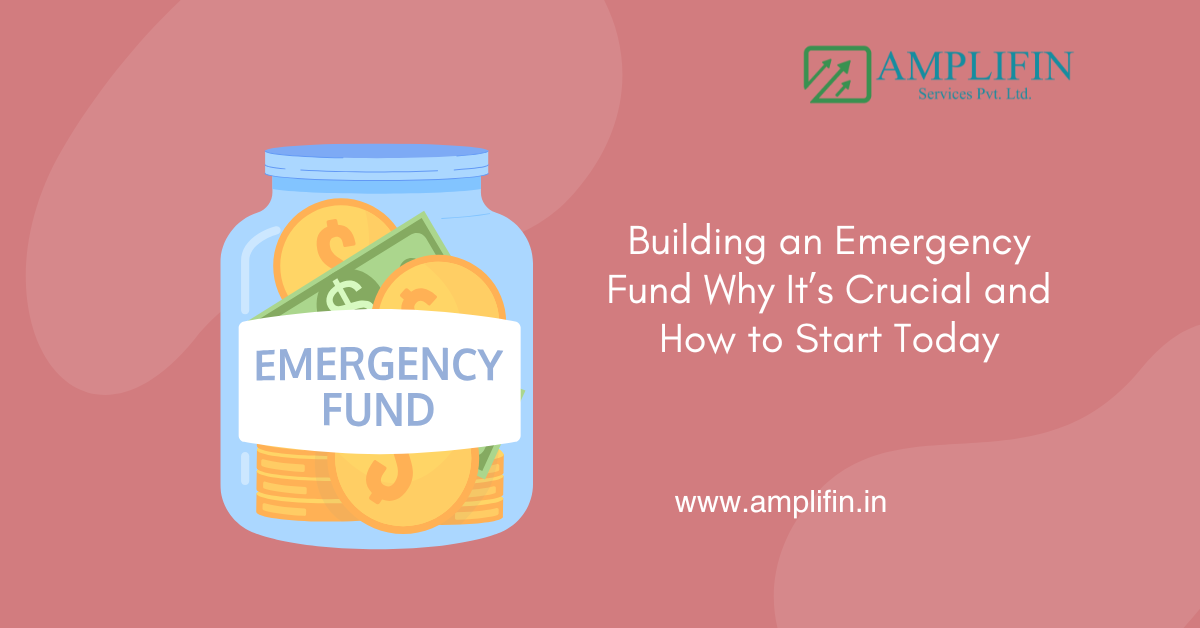Importance of Building an Emergency Fund: Your Guide to Building an Emergency Savings Fund
An emergency fund is your financial safety net, a critical component of sound personal finance that can transform uncertainty into stability. This comprehensive guide will walk you through everything you need to know about creating and maintaining an emergency fund, helping you protect yourself from unexpected financial shocks and achieve peace of mind. Whether you’re just starting your financial journey or looking to strengthen your financial resilience, this article will provide actionable strategies to build a robust emergency fund.

Article Outline
1. What Is an Emergency Fund and Importance of building an emergency fund?
2. How Much Should You Save in Your Emergency Fund?
3. Where Should You Keep Your Emergency Fund?
4. How to Build an Emergency Fund For Financial Stability
5. Strategies for Saving Money Quickly
6. How to Maintain and Grow Your Emergency Fund
7. Common Mistakes to Avoid When Creating an Emergency Fund
8. Emergency Fund for Different Life Stages
9. Using Your Financial Emergency Fund Wisely
10. The Long-Term Benefits of a Solid Emergency Savings
What Is an Emergency Fund and Importance of building an Emergency Fund?
An emergency fund is a dedicated savings account designed to cover unexpected expenses or financial emergencies. It acts as a financial buffer that can help you navigate through challenging times without derailing your financial stability. Whether it’s a sudden medical expense, unexpected home repair, or job loss, an emergency fund provides a crucial safety net.
The primary purpose of an emergency fund is to prevent you from falling into debt when unexpected situations arise. Instead of relying on credit cards or high-interest loans, you’ll have a financial cushion that can help you manage these challenges without compromising your long-term financial health.
Consider an emergency fund as insurance against life’s unpredictability. Just as you wouldn’t drive a car without auto insurance, you shouldn’t navigate your financial life without an emergency fund. It provides not just financial protection, but also significant peace of mind.
How Much Should You Save in Your Emergency Fund?
Financial experts typically recommend saving three to six months’ worth of living expenses in your emergency fund. This amount provides a substantial buffer that can help you weather significant financial disruptions, such as job loss or extended medical leave.
The exact amount depends on various factors, including your job stability, number of income earners in your household, and overall financial situation. If you work in a volatile industry or have an irregular income, you might want to save closer to six months of expenses.
To calculate your emergency fund goal, start by tracking your monthly expenses. Include essential costs like rent/mortgage, utilities, groceries, insurance, transportation, and other critical expenditures. Multiply this total by the number of months you want to cover.
Where Should You Keep Your Emergency Fund?
Choosing the right location for your emergency fund is crucial. The ideal account should offer easy accessibility, safety, and some growth potential. Here are the best options:
High-yield savings accounts are often the top choice for emergency funds. They offer higher interest rates than traditional savings accounts while maintaining liquidity and low risk. Online banks frequently provide better rates compared to traditional brick-and-mortar banks.
Money market accounts can also be a good option, typically offering slightly better interest rates while maintaining quick access to your funds. Look for accounts with no or low maintenance fees to maximize your savings.
Avoid investing your emergency fund in stocks, mutual funds, or other volatile investments. The goal is preservation and accessibility, not high returns.
How to Build an Emergency Fund for Financial Stability
Starting an emergency fund might seem daunting, but breaking it down into manageable steps can make the process much easier:
1. Set a realistic initial goal, such as saving Rs. 1,00,000 or Rs. 5,00,000
2. Open a separate savings account dedicated to your emergency fund
3. Automate your savings by setting up automatic transfers from your checking account
4. Cut unnecessary expenses and redirect that money to your emergency fund
5. Use windfalls like tax refunds or work bonuses to boost your savings
Remember, the key is to start small and be consistent. Even saving Rs. 2500 or Rs. 5000 per month can make a significant difference over time.
Strategies for Saving Money Quickly
Accelerating your emergency fund growth requires creativity and commitment. Consider these strategies:
Conduct a comprehensive review of your monthly expenses and identify areas where you can cut back. This might include reducing dining out, canceling unused subscriptions, or finding more affordable alternatives for services.
Look for ways to increase your income through side hustles, freelance work, or selling items you no longer need. Dedicate all additional income directly to your emergency fund.
Negotiate better rates on existing bills like insurance, phone plans, or internet services. The money saved can be immediately transferred to your emergency fund.
How to Maintain and Grow Your Emergency Fund
Once you’ve established your emergency fund, it’s essential to maintain and periodically reassess it. Life changes, and so should your emergency fund.
Review your emergency fund annually, adjusting for changes in your living expenses, income, or personal circumstances. If your expenses increase or you experience significant life changes like marriage, having children, or changing jobs, update your emergency fund accordingly.
Replenish your fund after using it for an actual emergency. Treat these replenishments with the same priority as your initial savings efforts.
Common Mistakes to Avoid When Creating an Emergency Fund
Avoid these pitfalls that can derail your emergency fund progress:
1. Not treating your emergency fund as a priority
2. Using the fund for non-emergency expenses
3. Setting unrealistic savings goals
4. Keeping the fund in an easily accessible checking account that might tempt spending
5. Not adjusting the fund as your financial situation changes
Emergency Fund for Different Life Stages
Your emergency fund strategy will evolve throughout different life stages:
For young professionals, focus on building an initial buffer of 3-6 months of expenses. As you progress in your career and take on more responsibilities, increase your fund accordingly.
For families, consider potential higher expenses like childcare, increased medical costs, and the need for a larger financial cushion.
For those near retirement, an emergency fund becomes even more critical, potentially covering 6-12 months of expenses to provide additional security.
Using Your Financial Emergency Fund Wisely
An emergency fund is strictly for genuine emergencies: unexpected medical expenses, critical home repairs, job loss, or other significant, unpredictable financial challenges. It’s not meant for planned expenses like vacations, gifts, or routine car maintenance.
Before tapping into your emergency fund, ask yourself:
Is this a true emergency?
Are there no other alternatives?
Will not addressing this issue create more significant financial problems?
The Long-Term Benefits of a Solid Emergency savings
Beyond immediate financial protection, an emergency fund offers profound long-term benefits:
Reduced financial stress
Ability to make calm, rational financial decisions
Protection against high-interest debt
Increased financial flexibility
Foundation for broader wealth-building strategies
Key Takeaways
An emergency fund is a critical component of financial stability
Aim to save 3-6 months of living expenses
Keep your emergency fund in a high-yield, easily accessible account
Start small and be consistent in your savings
Regularly review and adjust your emergency fund
Use the fund only for genuine emergencies
Building an emergency fund is an ongoing process that evolves with your life
